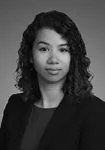A U.S. Supreme Court decision expected to potentially change (or at least clarify) the rules on the hot-button issue of statistical modeling in class actions ended up turning much more on case law specific to the Fair Labor Standards Act ("FLSA"), and on some litigation strategy decisions made at the trial court level. The Court's 7-1 decision in Tyson Foods v. Bouaphakeo, thus became much less of a blockbuster than many had expected.
Plaintiffs in the case were workers at a pork processing plant. They sought overtime pay for time spent putting on and taking off protective gear at either end of their shifts. Neither Plaintiffs nor the employer kept exact records of the time the proposed class of 3,344 workers spent changing the clothing, so Plaintiffs commissioned an expert study. The study averaged the time taken by a sample of the workers to change into and out of the protective clothing, which Plaintiffs put forward as the presumptive amount of time to be used in calculating each employee's overtime pay. Based on the study, Plaintiffs claimed that the class was entitled to an aggregate $6.7 million.
The study found a variance – sometimes significant — in the amount of time each employee took. The evidence also showed that 212 workers never passed the 40-hour work week threshold, meaning they were not entitled to any overtime pay. Despite this, the defense never challenged the expert study, nor did it agree to Plaintiffs' proposal to bifurcate trial into liability and damages phases, a procedure that would have provided an opportunity to oppose awards for workers not entitled to overtime pay. Instead, the defense argued on a motion to set aside the verdict (after the jury returned a $2.9 million award) that the variance in time spent by individuals donning and doffing the clothing, and the fact that some workers were not entitled to overtime pay at all, meant that individual issues predominated over common questions, preventing class certification under Rule 23(b)(3). Despite the challenge, the Iowa federal district court maintained certification of a class action and a FLSA collective action. The Eighth Circuit later affirmed.
Justice Kennedy wrote the majority opinion for the Supreme Court, in which all but Justice Thomas joined. Focusing on the Rule 23(b)(3) "predominance" question, the Court framed the "central dispute" as whether individual "person-specific inquiries into individual work time" were required or whether "these individual inquiries are unnecessary because it can be assumed each employee donned and doffed for the same average time" observed in Plaintiffs' study. 577 U.S. ___ at 9. Signaling that it was not going to issue a "blockbuster" decision the Court declined the request of Tyson Foods and various amici to "announce a broad rule against the use in class actions of what the parties call representative evidence," and instead stated that "[w]hether and when statistical evidence can be used to establish class wide liability will depend on the purpose for which the evidence is being introduced and on 'the elements of the underlying cause of action.'" Id. at 10. "One way for [Plaintiffs] to show ... that the sample relied upon here is a permissible method of proving class wide liability" the Court continued "is by showing that each class member could have relied on that sample to establish liability if he or she had brought an individual action." Id. at 11 (citations omitted). In other words, where admissible statistical evidence could be used to prove an individual claim, that evidence could be used to prove class claims as well.
The Court then cited its prior decision in Anderson v. Mount Clemens Pottery Co., 328 U.S. 680 (1946), which established a burden shifting standard specific to the FLSA that allows a plaintiff to establish presumptive injury "'if he produces sufficient evidence to show the amount and extent of [uncompensated] work as a matter of just and reasonable inference.'" Id. at 12 (citation omitted). This standard applies if – as here — the employer failed its statutory duty to keep accurate records of time worked. An employer can rebut this evidence by "com[ing] forward with evidence of the precise amount of work performed or with evidence to negative the reasonableness of the inference to be drawn from the employee's evidence." Id. Under this precedent, and its "individual case" proof standard, the Court found Plaintiffs' study to be a permissible means of proving class liability since individual employees could have relied upon it had sued individually. The use of statistical evidence did not deprive defendants of an opportunity to assert any defense, the Court further observed: if the statistical evidence itself was subject to challenge, defendants remained free to do so; here, however, the defense did not contest the validity of the Plaintiffs' study.
A second question raised was whether a class could remain certified where Plaintiffs had not proven that uninjured class members (viz. the 212 employees not entitled to overtime) (i) did not contribute to the "size of the damage award" and (ii) would not be awarded damages. Id. at 16. The Court declined to address this question, saying it was "premature" since no damages had yet been paid. The Court observed, however, that the defense had declined Plaintiffs' proposal to bifurcate the trial, thereby potentially "inviting" the inclusion of uninjured workers within the class, an issue it said the District Court should consider on remand. Justice Roberts, in a concurring opinion, expressed concern that the District Court might not be able to properly apportion damages among the class members given that the jury returned, without explanation, an award much smaller than Plaintiffs' study suggested ($2.9 million award vs. $6.7 million claim), and given that numerous class members were not entitled to any award at all. It remains to be seen how the District Court will handle this issue, and if the case will again be making its way through the appellate courts after damages are apportioned.
Overall, the decision announces no broad rules either allowing or disallowing the use of statistical evidence in class actions, but instead emphasizes that such use will depend on the specific circumstances and law applicable to each case. Two takeaways for class action defendants are to (i) continue to challenge proposed statistical evidence, if appropriate, and (ii) seek bifurcation of trial, if that will provide an effective means to address individual damages issues.
The content of this article is intended to provide a general guide to the subject matter. Specialist advice should be sought about your specific circumstances.


